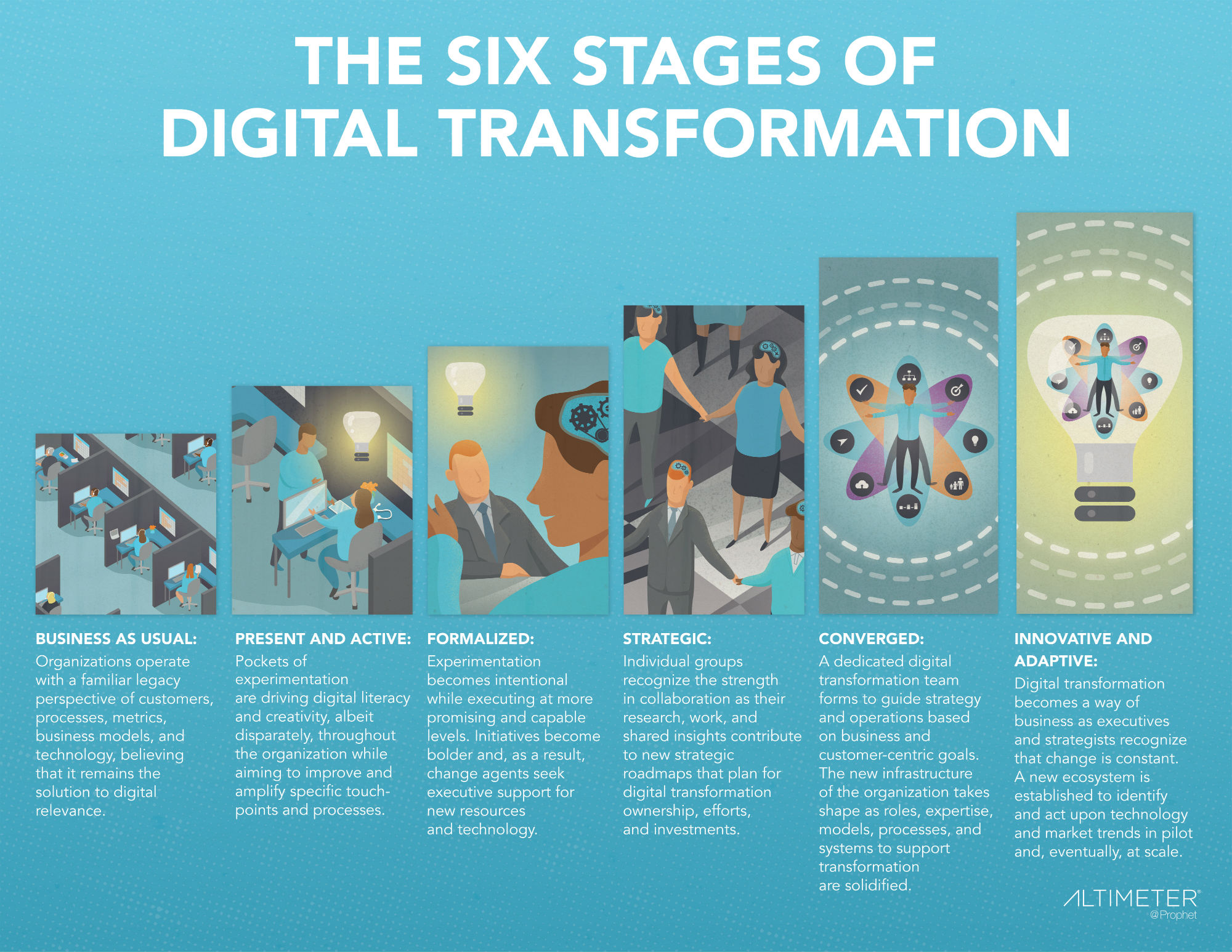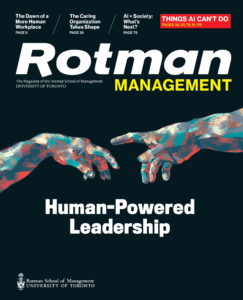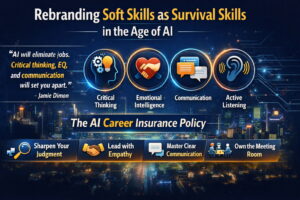The word “digital” can be misleading. Digital transformation is about how people and their behaviors, expectations, and preferences are changing.
Customer experience (CX) is one of the most important trends in business today as it brings companies closer to customers and customers closer to brands. But CX is also so much more. The work toward creating more relevant, meaningful and productive customer experiences also places your company and employees on a path toward business transformation.
But this isn’t change for the sake of modernization or shareholder value. This is changing your business from the outside in and the inside out to be relevant and engaging to a new generation of customers and employees. But to do so means that CX must evolve from legacy-based approaches to design human-centered strategies and infrastructures that are intuitive, productive and frictionless to real-world customers, not just shareholders.
We live in a time of digital Darwinism, an era when technology and its impact on business and society is constant with varying, but inevitable, degrees of disruption. The thing about digital Darwinism is that it plays out differently in the case of each industry and each organization. It’s less about the origin of the species and more about its fate as digital Darwinism is enlivened though changes in people (your customers, employees and stakeholders) and how markets are advancing as a result. Survival takes an intentional, informed effort to drive business evolution and modernization. But to thrive, takes something more.
In my research I’ve found that among the trends driving the evolution of business digital transformation is at the top of the list as one of the most compelling efforts bringing about meaningful and ultimately lucrative change Part of it is technology’s direct impact on society, our cultures, norms, etc. Another aspect is how technology is changing how we connect, communicate, discover and make decisions.
Digital transformation is one of those terms that means different things to different people. I define it this way:
Digital transformation is the realignment of, or new investment in technology, business models, and processes to create new value for customers and employees and more effectively compete in an ever-changing digital economy.
What started as enterprise initiatives led by progressive CIOs and IT organizations has spread throughout every facet of business. Over time, executives in other critical functions also led investments to bring their own technology roadmaps to life. In some cases, there’s internal competition between groups. For example, CMOs are often cited as the rival to CIOs in spending when it comes to new technologies and resources. But over time, all facets of business must work together under a common vision and aspiration if it is to excel in an era of digital Darwinism. This, I’ve learned, is something that happens only after departments attempt change independently. Eventually, there’s momentum and support to drive collaboration across the enterprise.
In 2014, I published a “State of Digital Transformation” report that found 88 percent of companies I surveyed claimed to be undergoing digital transformation. But I learned in the same research, that only 25 percent had actually studied, or were studying, the effects of digital Darwinism. Clearly, there was much to learn.
In my research over the years, I learned that digital transformation is a movement progressing without a universal map to guide businesses through proven and productive passages. This leaves organizations pursuing change from a known, safe approach that correlates with “business as usual” practices. Operating within the confines of traditional paradigms without purpose or vision eventually challenges the direction, capacity, and agility for thriving in a digital economy.
Introducing a Maturity Model to Guide Your Digital Transformation
Over the past three years, I’ve studied the maturity paths of some of the world’s leading brands including Dell, Discover, GM, Harvard, Lego, Metropolitan Museum of Art, Nestlé, Novartis, Sephora, Starbucks, Target, among many others. The result is a new report, “The Race Against Digital Darwinism: Six Stages of Digital Transformation.” It introduces a maturity framework that documents how companies are advancing technology roadmaps, business models and processes to compete in the digital economy.
This model was developed to help CIOs, CMOs, CDOs, and key stakeholders and follow the paths of other successful companies. But more so, it’s meant to give a checklist of sorts to guide, justify, validate, and effectively make the case for driving transformation.
One of the key insights I learned in the process was that mature companies establish purpose to create the kind of holistic alignment that inspires and drives enterprisewide change. I consistently found that customer experience often served as a primary catalyst for driving change with CMOs and CIOs helping them come together to jointly lead common efforts.
Through the lens of customer experience, digital transformation, I learned, organizations evolved through six progressive stages:
This report introduces each of the six stages as a self-contained phase, offering a narrative and a checklist to guide your journey.
1. Business as Usual: Organizations operate with a familiar legacy perspective of customers, processes, metrics, business models, and technology, believing that it remains the solution to digital relevance.
2. Present and Active: Pockets of experimentation are driving digital literacy and creativity, albeit disparately, throughout the organization while aiming to improve and amplify specific touch points and processes.
3. Formalized: Experimentation becomes intentional while executing at more promising and capable levels. Initiatives become bolder, and, as a result, change agents seek executive support for new resources and technology.
4. Strategic: Individual groups recognize the strength in collaboration as their research, work, and shared insights contribute to new strategic roadmaps that plan for digital transformation ownership, efforts, and investments.
5. Converged: A dedicated digital transformation team forms to guide strategy and operations based on business and customer-centric goals. The new infrastructure of the organization takes shape as roles, expertise, models, processes, and systems to support transformation are solidified.
6. Innovative and Adaptive: Digital transformation becomes a way of business as executives and strategists recognize that change is constant. A new ecosystem is established to identify and act upon technology and market trends in pilot and, eventually, at scale.
Collectively, these phases serve as a digital maturity blueprint to guide purposeful and advantageous digital transformation. Our research into digital transformation is centered on the Digital Customer Experience (DCX) and, thus, reflects one of many paths toward change. We found that DCX was an important catalyst in driving the evolution of business, in addition to technology and other market factors.
While presented in a linear format, our research shows that companies may span multiple stages at once depending on their goals, resources, and overlapping initiatives. Use this framework to validate, benchmark, and map your company’s progress toward digital literacy and leadership. Keep in mind, however, that you may find yourself revisiting and overlapping stages throughout program and strategy deployment.
Digital Transformation is Really about Competing for Relevance
The Six Stages of Digital Transformation represents a journey to evolve with and push ahead of technology and market trends. This is true business transformation. It’s in the ongoing pursuit that makes change less about resolute stages and more about an evolving vision, purpose, and resolve to engage a connected generation of customers and employees. It is the collective efforts of individuals and groups and the collaboration of cross-functional roles that pave the way for a new era of business, work, and customer centricity.
But to get there, executives must see and live the world through the lives of those who use new technologies to disrupt all that they touch to compete and innovate. It is how they do this and how well they execute that defines their destiny and legacy.
Download the report here.
Connect with Brian!
Twitter: @briansolis
Facebook: TheBrianSolis
LinkedIn: BrianSolis
Youtube: BrianSolisTV
Snapchat: BrianSolis







4 COMMENTS ON THIS POST To “Connected Customer Experiences Are at the Heart of Digital Transformation”